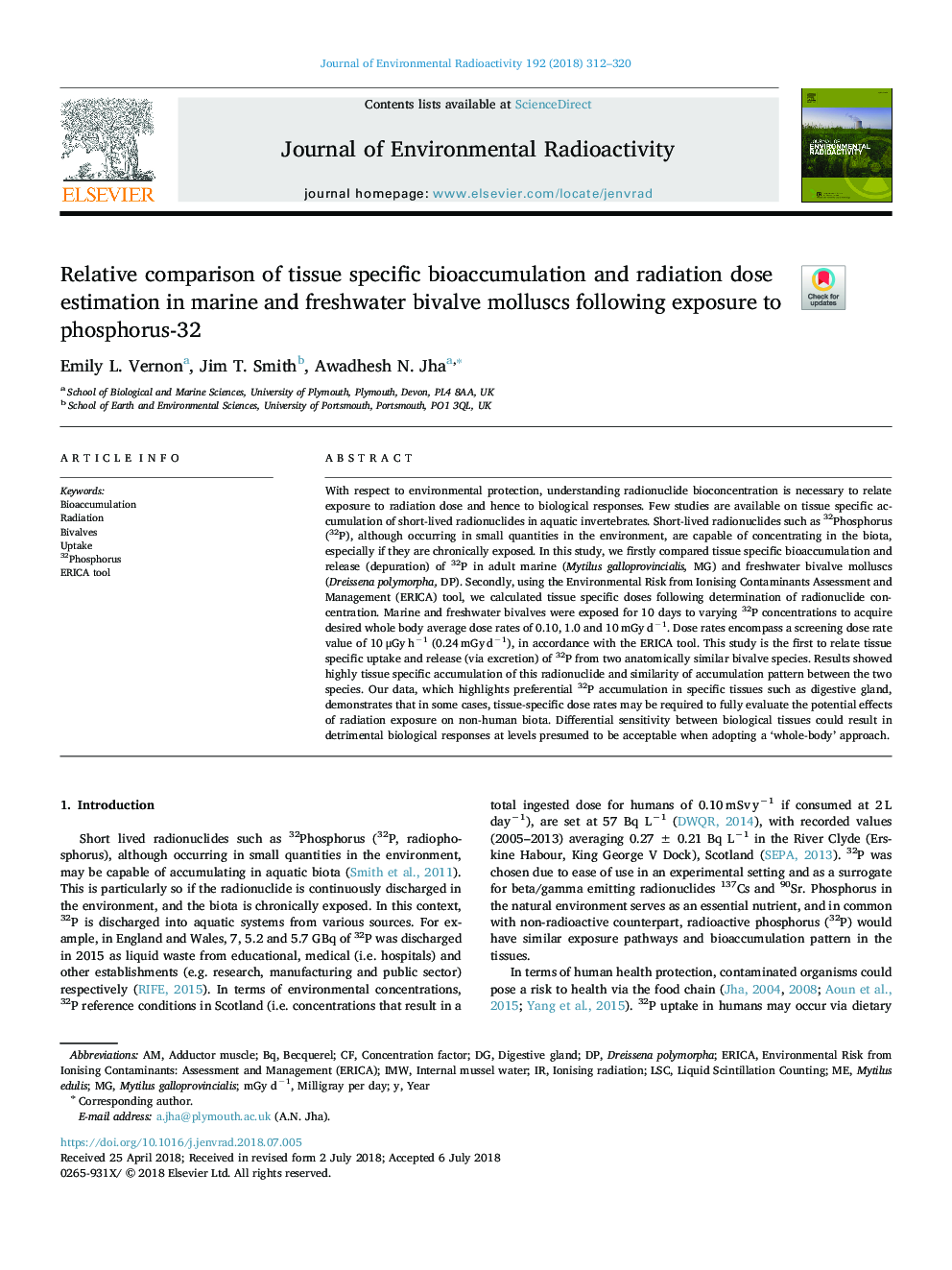| کد مقاله | کد نشریه | سال انتشار | مقاله انگلیسی | نسخه تمام متن |
|---|---|---|---|---|
| 8080249 | 1521551 | 2018 | 9 صفحه PDF | دانلود رایگان |
عنوان انگلیسی مقاله ISI
Relative comparison of tissue specific bioaccumulation and radiation dose estimation in marine and freshwater bivalve molluscs following exposure to phosphorus-32
ترجمه فارسی عنوان
مقایسۀ نسبی تخمین زیستی باکتری و تخمین دوز تابش در موزهای دوغاله دریایی و آب شیرین پس از قرار گرفتن در معرض فسفر 32
دانلود مقاله + سفارش ترجمه
دانلود مقاله ISI انگلیسی
رایگان برای ایرانیان
کلمات کلیدی
IMWERICA ToolERICALSCDreissena polymorphaMytilus galloprovincialisMytilus edulisBecquerel - بکرلionising radiation - تابش یونیزهUptake - جذبBivalves - دوکفهایها Bioaccumulation - ذخیره سازی بیولوژیکyear - سالliquid scintillation counting - شمارش مایع شمعدانیAdductor muscle - عضله آدرنالDigestive gland - غدد گوارشیConcentration factor - فاکتور غلظتRadiation - پرتو
موضوعات مرتبط
مهندسی و علوم پایه
مهندسی انرژی
انرژی هسته ای و مهندسی
چکیده انگلیسی
With respect to environmental protection, understanding radionuclide bioconcentration is necessary to relate exposure to radiation dose and hence to biological responses. Few studies are available on tissue specific accumulation of short-lived radionuclides in aquatic invertebrates. Short-lived radionuclides such as 32Phosphorus (32P), although occurring in small quantities in the environment, are capable of concentrating in the biota, especially if they are chronically exposed. In this study, we firstly compared tissue specific bioaccumulation and release (depuration) of 32P in adult marine (Mytilus galloprovincialis, MG) and freshwater bivalve molluscs (Dreissena polymorpha, DP). Secondly, using the Environmental Risk from Ionising Contaminants Assessment and Management (ERICA) tool, we calculated tissue specific doses following determination of radionuclide concentration. Marine and freshwater bivalves were exposed for 10 days to varying 32P concentrations to acquire desired whole body average dose rates of 0.10, 1.0 and 10â¯mGyâ¯dâ1. Dose rates encompass a screening dose rate value of 10â¯Î¼Gyâ¯hâ1 (0.24â¯mGyâ¯dâ1), in accordance with the ERICA tool. This study is the first to relate tissue specific uptake and release (via excretion) of 32P from two anatomically similar bivalve species. Results showed highly tissue specific accumulation of this radionuclide and similarity of accumulation pattern between the two species. Our data, which highlights preferential 32P accumulation in specific tissues such as digestive gland, demonstrates that in some cases, tissue-specific dose rates may be required to fully evaluate the potential effects of radiation exposure on non-human biota. Differential sensitivity between biological tissues could result in detrimental biological responses at levels presumed to be acceptable when adopting a 'whole-body' approach.
ناشر
Database: Elsevier - ScienceDirect (ساینس دایرکت)
Journal: Journal of Environmental Radioactivity - Volume 192, December 2018, Pages 312-320
Journal: Journal of Environmental Radioactivity - Volume 192, December 2018, Pages 312-320
نویسندگان
Emily L. Vernon, Jim T. Smith, Awadhesh N. Jha,
